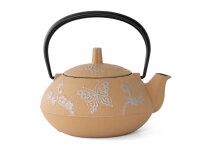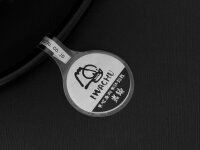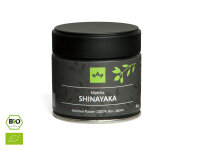Green tea preparation
GREEN TEA FROM JAPAN
Properly Brewing Japanese Green Tea
Interest in green tea has been growing steadily in Europe for years, and the fan base continues to expand. This is driven by a variety of reasons: health benefits, weight loss, and taste are the primary motivations for delving into the beautiful but complex world of green tea. Those who already appreciate the flavorful and healthy infusion understand that green tea is not just a single entity but encompasses a wide range of interesting teas and variations. Consequently, the health effects attributed to green tea, its flavor profiles, and even its support in achieving desired weight regulation exhibit some noteworthy differences.
Table of contents
Inhaltsverzeichnis
The path to the best green tea begins with thorough preparation Why water is so important for preparation Kyusu, the teapot. Taste and style Umami is tastiness par excellence The world of green tea flavors Encounters of a special and unique kind Green teas have character. Each its Good taste and health firmly in view Sencha: The favorite Bancha: The everyday Shincha: The fresh one Gyokuro: The Noble Kabusecha: The sweet one Kukicha: The relaxing one Hojicha: The smoky one Genmaicha: The special one Matcha: The ceremonial The perfect cup of tea at a glanceThe path to the best green tea starts with thorough preparation
If you want to prepare green tea, it's either simple or a little science of its own. Your best green tea is the one that tastes good to you and suits you well. We may not know your requirements, but we would like to meet them as much as possible, even if they are very high. Only you can answer the following questions: What variety should it be? What qualities would you like to enjoy? How much budget do you allow yourself when it comes to your equipment? Do you just want to drink good green tea, or are you willing to take time for tea preparation, peace, and indulgence? Or to delve deeper into green tea, even at the risk of it becoming a real hobby for you?
Simple green tea does not become worse through good equipment. However, the potential of first-class green tea can only develop with equally good equipment. Even before infusion, namely during storage, equipment plays an important role. To preserve the aroma of green tea optimally, the tea leaves must be protected from moisture, light, heat, and foreign odors. A good to high-quality tea caddy, light- and airtight, preferably moisture-regulating, a storage location with reasonably constant temperature – 18°C is very good, more than 30°C is too warm – and careful handling, i.e., no moist spoons during extraction, are a very good start.


With tea, water heated and cooled again to the right temperature, a scale, a teapot, tea cups or bowls, some tranquility, and a hearty dose of anticipation, you can get started. The better the tea, the water, but also the equipment, the higher your chances of achieving the highest possible enjoyment. Those who want to enjoy their tea authentically should pay special attention to the water and the teapot. Japanese green tea is preferably prepared with soft water because lime destroys the flavors contained therein. So, if your tap water is too hard or of poor quality, we recommend filtering the water or using still mineral water for preparation.
Depending on the water quality (taste, chlorine content), the water should boil for 3 – 5 minutes to avoid altering the taste of the green tea. If you use a Tetsubin, you have already taken a step towards premium quality. To maintain optimal water quality, some tea drinkers even let the water sit in the pot for 4 – 5 hours before using it. It is very important that the water has truly boiled and can then cool to the appropriate temperature. Please do not mix the hot water with cold water and do not use ice to cool it down.
Why the water for preparation is so crucial
Umami, the fifth taste, is a very important component of the flavor profile of Japanese green tea and should therefore be fully developed through tea preparation. The amino acids that carry this taste are released largely independent of the water temperature. It is completely different with caffeine and tannin, which cause astringency and bitterness. The hotter the water, the more of these substances end up in the brewed tea. At 80°C and above, especially many bitter substances (nigami), especially catechins, tannins (tannins), and caffeine dissolve. These substances are additionally responsible for astringency (shibumi), that is, a furry mouthfeel, and can detract from the tea's fine aroma. Therefore, it's important: Do not pour boiling water over the tea.
Green tea can be steeped a second and third time, particularly generous tea varieties even a fourth time, with hot water. The correct approach is to choose a significantly shorter steeping time than for the first infusion. What harms the quality is diluting the tea with hot water afterward – a lighter second steeping is the better choice.
Kyusu, the Teapot: Taste and Style
The choice of tea ware, teapot, cups, mugs, or bowls you use has an impact on your enjoyment. Traditionally, tea drinkers in Japan often use the practical and aesthetic one-handed teapot called Kyusu, as well as handle-less tea bowls made of clay. When pouring, you pour several small portions into the bowls to distribute the aroma evenly. Start from the first cup to the last, and then from the last back to the first cup. Be sure to completely empty the pot – this way, you won't lose any valuable flavors and ingredients, especially in the last drops of green tea. This approach, especially the complete emptying of the Kyusu, is also the reason why Kyusu have relatively small capacities. Sizes start at around 150 ml and range up to about 500 ml. Fine Gyokuro teas are often served in quantities of around 50 – 60 ml, so even a small Kyusu with 250 ml is sufficient for up to 4 people.
An alternative to clay teapots are cast iron teapots, which are also highly valued. These teapots, the most famous manufacturer being IWACHU, are enamel-coated inside and equipped with a stainless steel sieve that can be removed. This allows for a different process: you can put the tea as usual in the tea sieve and pour the properly tempered water over it. After the right steeping time, simply remove the tea sieve and distribute only part of the tea, the rest is kept warm in the cast iron teapot. When the teapot is empty, simply put the tea sieve back in for the second infusion. A small drawback is that while the tea sieve is relatively large, it still does not offer as much space as the clay Kyusu. And green tea greatly appreciates having plenty of space, rewarding the tea drinker with a bit more aroma.
Umami is Deliciousness Personified
Umami is a special taste. Scientifically speaking as well, because Umami has its own receptors, while other tastes are perceived through the combination of several receptors. Umami is savory and pleasant, and "full-bodied," as this taste spreads soothingly in the mouth. Umami enhances the taste of a variety of foods, but in some green teas, it shows its presence in a special way. We find Umami especially in protein-rich foods, and it is said that Umami tastes so pleasant because our bodies urgently need proteins. How convenient. We owe the taste experience of Umami to glutamate, discovered, analyzed, and named by a Japanese person in 1908: Kikunae Ikeda.
The Flavor Profile of Green Tea
Umami is a unique taste. Scientifically speaking, Umami has its own receptors, whereas other flavors are perceived through the combination of multiple receptors. Umami is savory and pleasant, and it has a "full-bodied" quality as this taste spreads soothingly in the mouth. Umami enhances the taste of a variety of foods, but it shows a particular presence in some green teas. We find Umami especially in protein-rich foods, and it is said that Umami tastes so pleasant because our bodies urgently need proteins. How convenient. We owe the taste experience of Umami to glutamate, discovered, analyzed, and named by a Japanese person in 1908: Kikunae Ikeda.
Encounters of the Special and Unique Kind
The taste of your delicious green teas is created by many components. Naturally, by the tea variety, the cultivation area with its specific soil, the intensity of sunlight, the processing, the water, the temperature, the time, the tea ware, and by yourself. You will encounter, in different intensities and variations, a tasty sweetness, a refreshing fruityness, warm roasty aromas, delicate bitterness and noble bitterness, nutty notes, berry freshness, and other taste impressions. Step by step, you will feel more at home in the flavor world of green tea, be more confident about what is coming to your tongue, and look forward to it.
Green Teas Have Character. Find Yours.
In the Land of the Rising Sun, many people can characterize and distinguish between different types of green tea. After all, the people in Japan have been engaging with the wonderful natural product of green tea for a very, very long time. To ensure that you make the best choices when selecting your tea and deciding on the best tea equipment, it's helpful to familiarize yourself with the various types of green tea and the nuances of preparation. Then, you will soon be able to enjoy your chosen green tea optimally.
A great predisposition is if you tend to be a bit adventurous. Always consider recommendations regarding tea-to-water ratios, water temperature, and steeping times as guidelines that will lead to a good result. With targeted deviations – gradual and not too large – you can vary the taste of your green tea and perhaps adjust it to your very own taste. Even blending different teas is conceivable or adding roasted rice to create your own Genmaicha. Below, we provide you with some information about the individual types of green tea. Without claiming completeness or absolute truth. Because taste is very individual. But you can be sure that most of the information comes from good, competent sources, the tea makers from Japan, or from our own experiences. Both regarding the qualities of the teas and the methods of tea preparation. Get to know the subtle variations and learn how to coax the best flavor out of your favorite tea.
Good Taste and Health in Focus
The preparation of green tea not only influences the taste but also the substances that go from the leaves into your infusion. There are many studies and numerous reports on the health effects of green tea. Its stimulating effect, well tolerated by most people, is also the subject of many reports. Therefore, we will refrain from discussing these topics in detail here and only briefly touch on the most important ingredients: amino acids, catechins, and caffeine. Amino acids are responsible for taste, especially for Umami. They dissolve almost independently of the water temperature, meaning their intensity increases only slightly with increasing temperature.
The catechins, tannin, and caffeine are responsible for the stimulating effect, astringency, bitterness, and also many effects on your health. These substances are significantly more released at higher water temperatures, around 80°C and above. So, if an infusion appears too bitter, a lower water temperature should be chosen. Shortening the steeping time to well below 2 minutes also helps reduce any potentially disturbing bitterness. However, firstly, it's not as effective as cooler water, and secondly, fewer substances are then dissolved into the infusion, which are actually welcome as they are attributed with high health benefits.
Preparation of Sencha: The Favorite
No variety is consumed in Japan as frequently as Sencha. Over 70% of the green tea cultivated in Japan is Sencha. This green tea is considered high-quality, with a rounded and intense flavor. The preparation of the tea is not complicated.
Our basic recommendation for preparing Sencha is as follows: 3g of tea leaves per 200ml of water. Water temperature at 70°C, Steeping Time I: 90 sec., Steeping Time II: 15 sec., Steeping Time III: 30 sec.
If you plan to make 3 infusions, boil at least 700ml of water in your kettle or Tetsubin, with some reserve. Pour it into a suitable vessel to cool it down. If possible, check the temperature with a thermometer. Add about a heaping teaspoon of Sencha tea leaves to the teapot or tea strainer. If using a clay Kyusu, you won't need a tea strainer. Once the water reaches the right temperature, make the infusion, possibly at the table. After 90 seconds - the tea leaves should have unfurled by now - pour the tea into the pre-prepared teacups and hand them over. Enjoy your tea. Pay attention to the taste, richness, and any bitterness present. Now simply pour the second batch of water into the teapot. Steep for 15 seconds, then distribute the tea back into the teacups. Compare the taste, richness, and possibly bitterness. For the third infusion, let the tea steep for 30 seconds. After the third round, gather your impressions, as from now on, the path to your optimal Sencha enjoyment begins.
Optimization: Naturally, there are several ways to achieve an even better result with your next infusion. The right way will also be influenced by your personal assessment of the outcome. If you want to reduce bitterness, lower the water temperature. If you want to enhance the flavor and richness, extend the first steeping time. If this does not lead to the desired result, increase the amount of tea leaves. You should give each type of tea at least 3 chances before dismissing it. Before that, a genuine assessment is hardly possible or quite vague. But once you are confident in your assessment, it makes sense and brings much joy to test various Sencha teas.
Testing Option:
It is also possible to prepare and compare multiple tea varieties with the same variables - amount of tea leaves, water temperature, steeping time. However, this may not always do justice to the respective tea, as each tea is different and requires its own individual conditions for optimal development. Even if it's the same type of tea and maybe even similar quality.
Bancha Preparation: The Everyday
High in iron, low in caffeine: This is how Bancha can be described, the second most popular tea among Japanese after Sencha. Bancha is often enjoyed with meals, in the evening, and frequently throughout the day. Most varieties are crafted by tea makers from coarser leaves and a later harvest, but there are high-quality Bancha teas made with delicate, young leaves. While these varieties are on par with many Sencha teas in terms of quality, their character is characterized by mildness, gentle sweetness, and low caffeine content. Because of its low caffeine content, Bancha is a staple tea in many households in Japan. It is also very affordable and a good cup of Bancha is quickly prepared.
Our basic recommendation for preparing Bancha is as follows: 4g of Bancha for 200ml of water. Water temperature at 75°C, Steeping Time I: 35 sec., Steeping Time II: 15 sec., Steeping Time III: 30 sec.
If you wish to optimize the result of your first attempt, proceed in the same way as with the preparation and optimization of Sencha. Especially with high-quality Bancha, it will surely be worth it for you to achieve an optimal result with this tea variety. Because it is quite likely that you will be drinking this tea quite often.
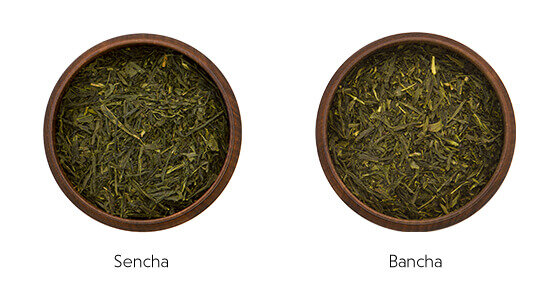
Shincha Preparation: The Freshness
Harvested even earlier than Sencha, Shincha boasts its distinctive taste: fresh and aromatic. At the same time, due to its gentle processing, it provides the full range of ingredients beneficial for health. In earlier years, Shincha was mainly enjoyed in spring, as soon as possible after harvest. However, with improved packaging methods that preserve all flavors optimally, Shincha can now be enjoyed throughout the year without hesitation.
Our basic recommendation for preparing Shincha is as follows: 3g of Shincha for 200ml of water. Water temperature at 65°C, Steeping Time I: 90 sec., Steeping Time II: 15 sec., Steeping Time III: 30 sec.
When optimizing, be sure not to choose a water temperature above 70°C. Otherwise, the Shincha can easily become bitter. Since it is a lighter, fresher green tea, increasing the amount of tea may lead to the desired result.
Gyokuro Preparation: The Noble
Hardly any type of tea is as highly esteemed as "Shade Tea": Gyokuro. Why is it called that and why is it so valuable? One month to two weeks before harvest, the field is covered with a net so that the tea plant continues to grow in the shade. This way, the tea leaves do not grow very large, but they become particularly rich in vitamin C, amino acids, minerals, caffeine, fiber, and chlorophyll - everything that makes high-quality green tea. To fully benefit from its health and taste effects, the noble tea leaves are traditionally eaten after a small tea ceremony. Preferably seasoned with a little soy sauce.
In the case of shade tea Gyokuro, the taste of Umami plays a particularly important role. Only when it is clearly perceptible is the tea successful. Good Gyokuro also has a more or less pronounced sweetness, is full-bodied and strong. Then the desired effect will occur: Combined with high enjoyment, Gyokuro provides strength and awakens the spirits. The caffeine strengthens concentration, and the other ingredients promote metabolism, heart and circulation, and memory performance. Particularly Japanese monks appreciate the stimulating effect of this tea for meditation. The secret of its power lies, of course, in the correct tea preparation.
Our basic recommendation for preparing Gyokuro is as follows: 8g of Gyokuro for 200ml of water. Water temperature at 60°C, Steeping Time I: 90 sec., Steeping Time II: 15 sec., Steeping Time III: 15 sec., Steeping Time IV: 30 sec.
A lot of tea with little, quite cool water. In tastings, only 50ml per person are often poured. Many varieties become significantly fuller when the steeping time is extended. There is Gyokuro that you can easily steep for 4 - 5 minutes. So, there is plenty of room for your optimization. Many green teas, but especially Gyokuro, are also a real pleasure when served cold. Refreshing, invigorating, and stimulating. Feel free to try it if you have already found the optimal preparation for the selected tea variety.

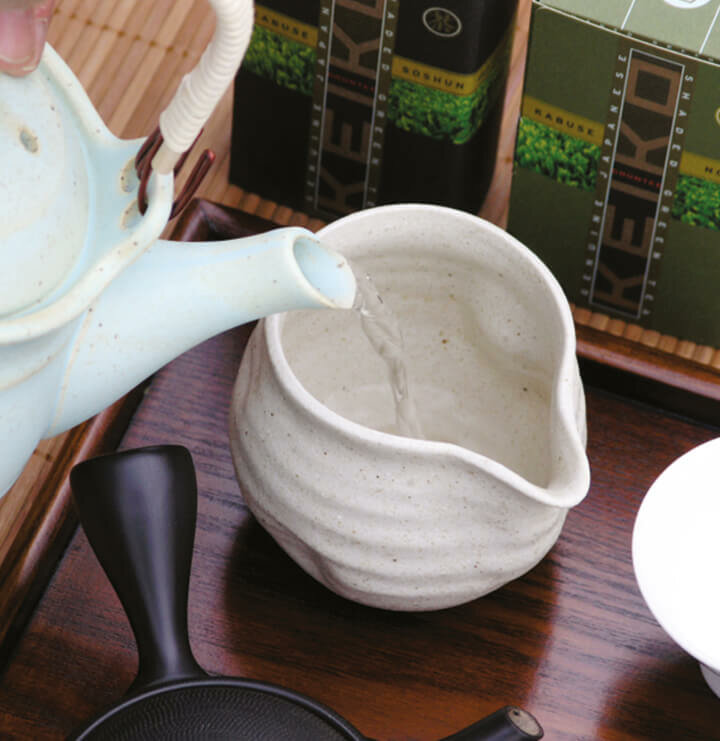
Kabusecha Preparation: The Sweetness
Similar to Gyokuro, Kabusecha is also shaded, but only about one to two weeks before harvest. Instead of the entire field, only individual tea plants are covered with nets (called "kabuse" in Japanese). That's why it's called "semi-shaded" and it forms a wonderful combination of the mild, unshaded Sencha and the strong, flavorful Gyokuro. Because its production is less elaborate than that of Gyokuro, it is also somewhat more affordable. A characteristic sweetness, as well as a slight bitter note and astringency, distinguish it and are intentional.
Our basic recommendation for preparing Kabusecha is as follows: 4g of Kabusecha for 200ml of water. Water temperature at 60°C, Steeping Time I: 60 sec., Steeping Time II: 15 sec., Steeping Time III: 30 sec.
On the way to your optimal result, you could start by increasing the steeping time. Up to about 2 minutes is room to maneuver. Some Kabusecha teas also recommend significantly higher amounts of tea, so this could be the second test variable. With the water temperature, you should be careful and, despite all your experimentation, not exceed 70°C.
Kukicha Preparation: The Relaxing
Quality teas contain only the best and most appealing leaves. But what happens to the stems, stalks, and leaves that are not so pretty? In Kukicha, we find them again. Kukicha is by no means a second-class product; it is its own special type of tea with its own character. A Kukicha should be just as pure, well processed, and carefully prepared as any other of the many green teas. Kukicha then offers a wonderful tea experience with its aromatic ingredients, which also come from the stems of the plant. It has very little caffeine and few bitter substances, so it often enriches the evenings. Its taste is mild, often sweetish, and somewhat nutty. Its minerals and trace elements are healthy and beneficial.
Our basic recommendation for preparing Kukicha is as follows: 3g of Kukicha for 200ml of water. Water temperature at 70°C, Steeping Time I: 50 sec., Steeping Time II: 15 sec., Steeping Time III: 30 sec.
Since Kukicha is made from different teas - Sencha, Gyokuro, and others - it also offers plenty of room for individual variations. 80°C should not be exceeded, an increase in the amount of tea will achieve good results, especially with high-quality varieties. Feel free to try increasing the steeping time; some varieties can tolerate 2 minutes and taste delicious.
Overview of Our Kukicha Green Teas and Other Tea Varieties »

Hojicha Preparation: The Smoky
Hojicha is a green tea that is not steamed but roasted. Due to this processing, it somewhat resembles black tea, but only the particularly noble varieties. The roasting of Hojicha is done meticulously, very carefully over charcoal. This results in a roasted aroma with notes of malt, nuts, or caramel. Very fine, very delicious with hearty dishes, warming, therefore particularly popular in the cold season and on cool summer evenings. Since Hojicha also contains little caffeine, it is also very good to drink in the evening. The original tea for Hojicha is usually Sencha or Bancha, but there are also manufacturers who process Kabusecha or other teas into Hojicha. Hojicha also tastes very good as a cold beverage.
Our basic recommendation for preparing Hojicha is as follows: 4g of Hojicha for 200ml of water. Water temperature at 80°C, Steeping Time I: 30 sec., Steeping Time II: 15 sec., Steeping Time III: 30 sec.
For optimizing Hojicha, we recommend increasing the water temperature somewhat unusually. Some Hojicha teas can tolerate water up to 90°C. Depending on the variety, this could allow the aroma to unfold even more without becoming bitter. The steeping time should be kept short. Of course, it's also worth testing to increase the amount of tea to 5 or 6g.
Overview of Our Hojicha Green Teas and Other Tea Varieties »
Genmaicha Preparation: The Special
This extraordinary type of tea is created by mixing Sencha with roasted rice (known as "genmai" in Japanese). Only the youngest, highest quality leaves and buds are found in premium Genmaicha. The blend offers a unique taste experience: The rice adds a slightly noble-bitter note to the delicate Sencha aroma, similar to good coffee. At the same time, it is easily digestible and calming, as the rice reduces the caffeine content and the bitterness of the theanine. Genmaicha is easy to prepare and can soon unfold its calming and balancing effects. Genmaicha with a portion of Matcha are also very interesting. These teas offer an even more diverse taste experience.
Our basic recommendation for preparing Genmaicha is as follows: 6g of Genmaicha for 200ml of water. Water temperature at 70°C, Steeping Time I: 30 sec., Steeping Time II: 15 sec.
Since the proportion of rice in Genmaicha is not fixed and therefore varies greatly in many varieties, some variables can vary greatly until you find the optimal ones for the respective tea. Pay particular attention here to the information about the respective tea variety. Similar to Hojicha, a higher water temperature can yield better results with Genmaicha. It may be worth testing 80°C or even 90°C. Changing the amount of tea can also be interesting. Since the proportion of tea is relatively low due to the addition of rice, the rice can become too dominant depending on the variety if small amounts are used and the tea cannot assert itself. However, it remains a matter of individual taste.


Matcha Preparation: The Ceremonial
Since it has become so popular, everyone knows: Matcha tea is different. Simply because Matcha is ground, otherwise it wouldn't be Matcha. Its taste is unique. Its ingredients are completely consumed. It is invigorating without making you nervous. It is healthy without side effects. A high-quality Matcha tea is visually striking at first glance: finely ground, jade-green powder. The bright color appears refreshing, friendly, robust, inspiring, and healthy. The color is also an important indicator of quality. If the powder appears rather dull and yellowish, caution is advised. Like green tea in general, the ground tea contains plenty of proteins, fiber, iron, chlorophyll, calcium, and potassium, valuable vitamins, amino acids like L-theanine, caffeine, and catechins. And when consuming Matcha tea, you also get the non or poorly water-soluble substances delivered, which are less or not at all contained in green tea. With good Matcha, this happens in a very delicious and digestible way. The green tea from which Matcha is ground is called Tencha, sometimes Gyokuro and Kabusecha are also used for further processing. Only the finest, most delicate leaf parts are used for high-quality Matcha. There are very large differences in taste. In general, very high-quality Matcha tastes mild, has fine flavor notes, exhibits a certain noble sweetness but hardly any bitterness. Depending on the variety, a certain noble bitterness and slight astringency may also be desired in high-quality Matcha. Truly bad or even wrong Matcha teas even taste somewhat sour.
There are two ways to drink Matcha tea: Usucha, the thin tea, and Koicha, the thick tea.
For a Koicha, you should treat yourself to a really good Matcha, otherwise drinking Koicha can be quite unpleasant. The tea preparation naturally differs somewhat. You will need a few additional utensils: a small bamboo whisk called Chasen, a Chashaku (bamboo spatula), and ideally a small sieve. Boil the water and let it cool to the right temperature. Meanwhile, warm the Matcha bowl with warm water. Then add some of the correctly tempered water and the Matcha to the Matcha bowl. Using a sieve helps to avoid the formation of lumps. Now, whisk the powder with the Chasen until the mixture is free of lumps, i.e., smooth. Now add the remaining water and beat the Matcha with the Chasen loosely from the wrist. A battery-operated, small milk frother can also do this – but whether it's as much fun? A relatively stable layer of foam should form within about 15 seconds. Then it's ready.
Our basic recommendation for preparing Usucha is as follows: 2g for 100ml of water, water temperature at 75°C, beat with Chasen for about 15 seconds.
Our basic recommendation for preparing Koicha is as follows: 3g for 50ml of water, water temperature at 75°C, beat with Chasen for about 15 seconds.
With the basic recommendation, you will quickly get an impression of the chosen Matcha variety. On the way to your individually best Matcha, you should be careful with the amount and only vary it slightly. You can freely vary the amount of water between 50 ml and 100 ml, increase the water temperature, depending on the Matcha, up to 95°C. Once you have found your own best Matcha, there are still many ways to create fine delicacies with Matcha. From Matcha latte to muffins to emerald green ice cream. When making a purchase, look for fine powder and intense color, especially if you want to drink Matcha tea pure.
The Perfect Cup of Tea at a Glance
You've learned that preparing green tea correctly isn't difficult. Although each variety has its own quirks, they all share something in common:
- Green tea loves soft and not too hot water. For most varieties, 80°C is the upper limit; for very high-quality tea, it's better to be cooler.
- Even very high-quality tea is more affordable than you might think because you can steep it up to 4 times, and after that, enjoy the steamed tea with pleasure.
- The cooler the water, the longer the steeping time can be.
- The best comes last: Appreciate the last drops from the teapot because they are full of aroma and energy.
- Experimentation is worthwhile: Just as different as the varieties are, so is every taste individual. Adjust it to your desires.
We wish you much joy on this journey into the taste world of green tea. There's a lot to discover. Take your time and leisure, then you'll benefit doubly and triply. Treat yourself, if you're a fan of green tea, to a good standard and occasionally a highlight. That way, it will never be boring. Every type of tea has good and very good qualities to offer. Avoid too cheap offers when buying Japanese green tea - high qualities are really not cheaply available. In Japan, a lot of emphasis is placed on quality and perfection in cultivation and processing, often manual labor, making cheap offers simply impossible. Quality has its price. Equipped with suitable utensils and the necessary knowledge, you can now begin your journey of enjoyment. Enjoy it.












